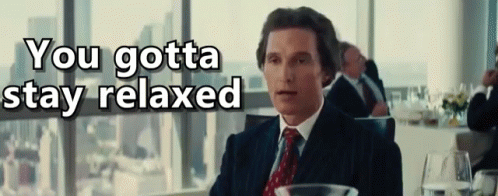BUILDING TRUST THROUGH VIDEO – HOW TO PREPARE AND EXECUTE
by Valerie Train (Brand Manager)
Building trust through video takes a lot more than piecing together a well-produced spot. The human brain is hardwired to recognize faces and make judgments almost immediately. As humans, we are scientifically drawn to faces, and we naturally want to empathize with people. One of the ways marketers can take advantage of this is by using an on-camera talent in their videos. Although using people is much more beneficial than using animation or graphics, it’s a lot trickier to nail.
If your business is planning a video shoot with an on-camera talent, it’s important to prepare accordingly. Here’s what you can do as a marketer before and during a shoot to ensure your brand’s message is well-received and helps to build trust.
Preparing for Your Video Shoot
Communication is Key
In order to create a successful video, a single point of contact should be designated right away. This person will serve as the direct line of communication between the production company and your business. They will be responsible for communicating the video’s goals to the production company clearly. The point of contact should be on set the day of the shoot. If the production crew is coming to your place of work, the point of contact is responsible for making sure the rest of your company is prepared. Let everyone know what time the shoot will start and end to limit disruptions. Any kind of confusion or disruptions on set can affect the on-camera talent and ultimately the message of your video. A relaxed and prepared talent should result in a trustworthy and engaging video.

Choosing the Talent
There are several points to consider when determining who will be speaking on camera. First, keep in mind that this person may need to be the talent in several different videos over time. Studies show that using the same person time after time in your videos helps build trust. It creates a sense of familiarity. So be mindful of that and try to choose someone who will be able to represent your company for a long time. Next, the talent you are choosing should be an excellent speaker. They should articulate well and have a soothing voice. Finally, the talent should be very knowledgable about the subject matter or should be so convincing that you can’t tell they’re not knowledgable. This will help the talent speak as naturally as possible because they won’t need to read off of a script. Their lines will be more conversational and easier to understand.
**Using a teleprompter is fine, but it’s difficult to master. Often times reading from a teleprompter comes off as robotic – so the talent needs to be aware of that.**
Review the Script
Just because the script or outline has been approved, doesn’t mean that you shouldn’t become very familiar with it. Before the shoot takes place, go through the approved script, storyboard or outline and address any questions you may have. If you wait until the last minute, it may be too late to make a change. Make sure the talent is aware of what is expected of them. Lastly, make certain that the message is in-line with your company’s mission and goals.
On Set
Control the Environment
Controlling the environment is essential to a smooth and successful shoot. While on set, only key people should be in the room. If there are too many on-lookers, the talent may become distracted or nervous – and that will come across on camera. During the shoot, be attentive and encouraging. All cell phones should be silenced and usage should be limited. Microphones pick up the slightest of noises, so be mindful of that. Wait for the director to say “cut” before speaking (unless there is an emergency of course).
On-Screen Body Language
As mentioned earlier, our brains are hardwired to make judgments and recognize faces very quickly. If you or a member of your team will be speaking on camera, a good rule-of-thumb is to treat the performance like a real-life interaction. This means the talent should keep things conversational and engaging.
Maintain eye contact with the interviewer or camera lens. Hold the look after the thought is complete, and end all statements clearly. Before the shoot begins, the director will let the talent know where they should be looking. If it’s not a direct to camera situation, completely avoid looking at the camera. If it is a direct to camera situation, the talent should look directly into the lens as they speak. Good posture and confidence is essential.
Finally, act natural. Little things like having your arms crossed can come across as unwelcoming, just like in real life. If the talent speaks with their hands, do so – it’s important to be comfortable and yourself.

If the talent seems uncomfortable on camera, your message could be missed as the audience will be focused on their visible discomfort. Viewers will inherently look for emotional cues, so don’t give them the wrong ones. Take these shoots seriously. This video could live forever, it’s worth the extra preparation time.
And… Cut.
When you include a person in your video, it adds authenticity and integrity. As a full service marketing and advertising agency with an in-house production department, 321Blink has worked with many different clients all with unique messages. We know what works. If you want viewers to be drawn to your video, and if you want to build trust and credibility for your brand, take the time to deliver your message correctly.
More Blogs

